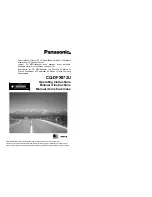
Function
Signal *
Wire colour
Pin
9 way D-type
Power
5 V
Brown
4, 5
0 V
White
8, 9
Green
Serial
communications
MA+
Violet
2
MA−
Yellow
3
SLO+
Grey
6
SLO−
Pink
7
Shield
Shield
Shield
Case
Function
Signal
Wire colour
Pin
9 way D-type
Power
5 V
Brown
4, 5
0 V
White
8, 9
Green
Serial
communications
MR
Violet
2
MRR
Yellow
3
Shield
Shield
Shield
Case
Reserved
Do not connect
Grey
6
Pink
7
BiSS C-mode serial comms – output signals
* For details, refer to BiSS
Data sheet L-9709-9005.
Mitsubishi serial comms – output signals
9 way D-type plug
31
16
52
Output signals
Function
Signal
Wire colour
Pin
9 way D-type
Power
5 V
Brown
4, 5
0 V
White
8, 9
Green
Serial
communications
S
Violet
2
S
Yellow
3
Shield
Shield
Shield
Case
Reserved
Do not connect
Grey
6
Pink
7
Yaskawa serial comms – output signals
EVOLUTE RTLA50-S installation guide
8
General specifications
Power supply
5 V ±10% 1.25 W maximum (250 mA @ 5V)
NOTE:
Current consumption figures refer to terminated
EVOLUTE systems. Renishaw encoder systems must be
powered from a 5 V dc supply complying with the requirements
for SELV of standard IEC BS EN 60950-1.
Ripple 200 mVpp maximum @ frequency up to 500 kHz
Sealing
IP64
Acceleration
(readhead)
Operating 500 m/s
2
, 3 axes
Shock
(readhead)
Non-
operating
1000 m/s
2
, 6 ms, ½ sine, 3 axes
Maximum acceleration
of scale with respect to
readhead
2000 m/s
2
NOTE:
This is the worst case figure that is correct for the
slowest communications clock rates. For faster clock rates, the
maximum acceleration of scale with respect to the readhead
can be higher. For more details, please contact your local
representative.
Vibration
Operating 300 m/s
2
, 55 Hz to 2000 Hz, 3 axes
Mass
Readhead
18 g
Cable
32 g/m
Readhead cable
7 core, tinned and annealed copper, 28 AWG
Single-shielded, outside diameter 4.7 ±0.2 mm
Flex life >40 x 10
6
cycles at 20 mm bend radius
UL recognised component
Maximum cable length
3 m
For maximum extension cable length, contact your local
Renishaw representative.
The EVOLUTE encoder system has been designed to the relevant EMC standards, but must
be correctly integrated to achieve EMC compliance. In particular, attention to shielding
arrangements is essential.




























